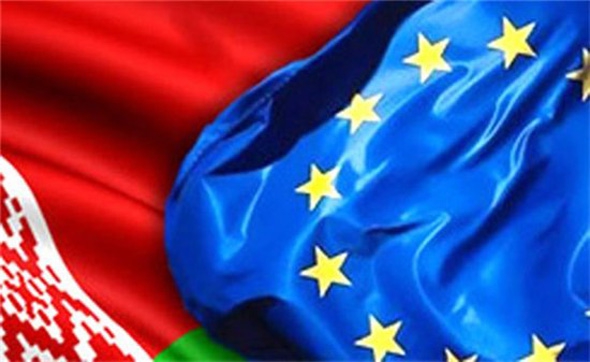
Bringing Belarus Back in From the Cold (Part One)
Publication: Eurasia Daily Monitor Volume: 12 Issue: 107
By:

At the European Union’s Eastern Partnership summit in Riga (May 21–22), the EU’s neighborhood and enlargement policies came to a grinding halt. To some extent this is an effect of Russia’s war against Ukraine, the centerpiece country of the EU’s Eastern Partnership. But, irrespective of this war and even prior to it (see EDM, September 5, 6, 11, 18, November 19, 20, 25, 26, December 3, 4, 5, 9, 10, 2013), the Partnership was already unraveling or failing in varying degrees in all of the six partner countries.
The United States, with major interests to protect its frontline allies in Europe, seems nevertheless largely disengaged from Europe’s East in a strategic sense. The US naturally defers to the EU’s leadership there; but the deference does not presuppose de-prioritization to the extent of strategic disengagement, particularly when the EU’s own leadership in the region is faltering at the institutional level.
The Partnership’s framers, for all their dedication (which is already being missed after the rotation of the European Commission and the departure of the policy’s Swedish and Polish founding fathers), insufficiently considered the characteristics and interests specific to each partner country in Europe’s East.
The pause just announced favors a thorough rethink of the Partnership policy, so as to ensure that the pause is no more than temporary. This requires more than “Staying the Course” on the Eastern Partnership in the new situation (Carl Bildt, Project Syndicate, May 20). Given that the Partnerships are, fundamentally, offers of the EU to the partner countries, the offers must be disaggregated from the existing six-country package, and instead be adjusted to fit each partner country individually.
Furthermore, EU institutions and (at least) the influential national governments need to reconsider some definitions of what constitutes state success. Belarus and Azerbaijan have often been misjudged as the Eastern Partnership’s problem cases on narrowly construed criteria of political democracy. Yet Belarus along with Azerbaijan are actually the most successful of the EU’s six eastern partner states, if the full set of state-building and socio-economic criteria are factored in (see below). The institution of the executive presidency has made their success possible, as it had in Georgia until 2012 (vindicated also by the new Ukraine’s enlistment of Georgian reformers—see EDM, June 2, 4, 5). By contrast, Moldova, advertised as the Eastern Partnership’s “success story” in 2012–2014, has turned into its most dysfunctional state under parliamentary rule by coalition (comparable with Ukraine in 2005–2013 under its mixed form of government of that time).
Brussels has long singled out Belarus for ostracism and sanctions, as has Washington. After more than a decade of sanctions, ironically, Brussels and Washington have more Belarusian officials and businessmen on their sanctions lists than they have Russians in the wake of Russia’s war against Ukraine. In the EU alone, more than 200 Belarusian officials and some 20 Belarusian companies are blacklisted. Three detainees in Belarus classified as political prisoners constitute the ultimate rationale of the sanctions. The EU has excluded Belarus from most benefits of the Eastern Partnership program.
The EU had begun reconsidering its policy of ostracism prior to the Riga summit, thanks mainly to the efforts of Belarus’s Baltic neighbors Lithuania and Latvia. The US has begun inching in that direction also. The Baltic capitals, however, understood ahead of others that a decade of isolation and sanctions against Belarus have: a) failed to “promote democratic change” in Belarus; b) underestimated the stable socio-political base of President Lukashenka’s government and the consolidation of a new elite committed to state sovereignty; c) “isolated” not Belarus, but the West and Belarus from each other, on the state, elite, and societal levels; c) undermined Belarus’s capacity to maintain its sovereignty vis-à-vis Russia, all but ignoring Minsk’s efforts in that regard; and d) seemed blind to Belarus’s pivotal position in Central Europe, which may either remain a neutral buffer de facto, shielding the North Atlantic Treaty Organization (NATO) and Ukraine, or alternatively be turned into an offensive outpost by Vladimir Putin’s new Russia.
Yet any reconsideration of Western policies will properly avoid being cast as competition with Russia. The EU’s pause-for-thought (see above) can result in abandoning the failed policies at last and refocusing on issues of practical cooperation with Belarus. This can bring significant net gains to Belarus and EU-Belarus relations. The prerequisites for this are in place in Belarus.
Belarus is politically and socially the most stable country among the EU’s eastern partner countries. Compared with Moldova or Georgia, not to mention Ukraine (pre- and post-Maidan), and compared with Russia even, Belarus looks like an oasis of stability. It is the EU’s only Eastern partner that controls its territory and its borders entirely (Armenia cannot claim this since it occupies Azerbaijani territories and is constantly involved in skirmishing there).
Belarus is the country where the informal social contract between rulers and the ruled has held all along. According to the United Nations Human Development Index and the Social Progress Index in recent years, Belarus leads the Eastern Partnership states with regard to GDP growth, economic and social stability, low crime and corruption rates, absence of violence and terror. The country has no known “oligarchs” and is not a scene of conspicuous consumption by elites. The elites’ offspring generally pursue conventional bourgeois-professional careers. With low-cost Russian energy supplies to Belarus’s state-owned industries, Belarus brands itself as a socially oriented state. Public opinion surveys show higher levels of satisfaction with their own lives on the part of Belarus’ citizens, compared with citizens of other eastern partner countries of the EU (EU Neighborhood Barometer, 2012–2014).




